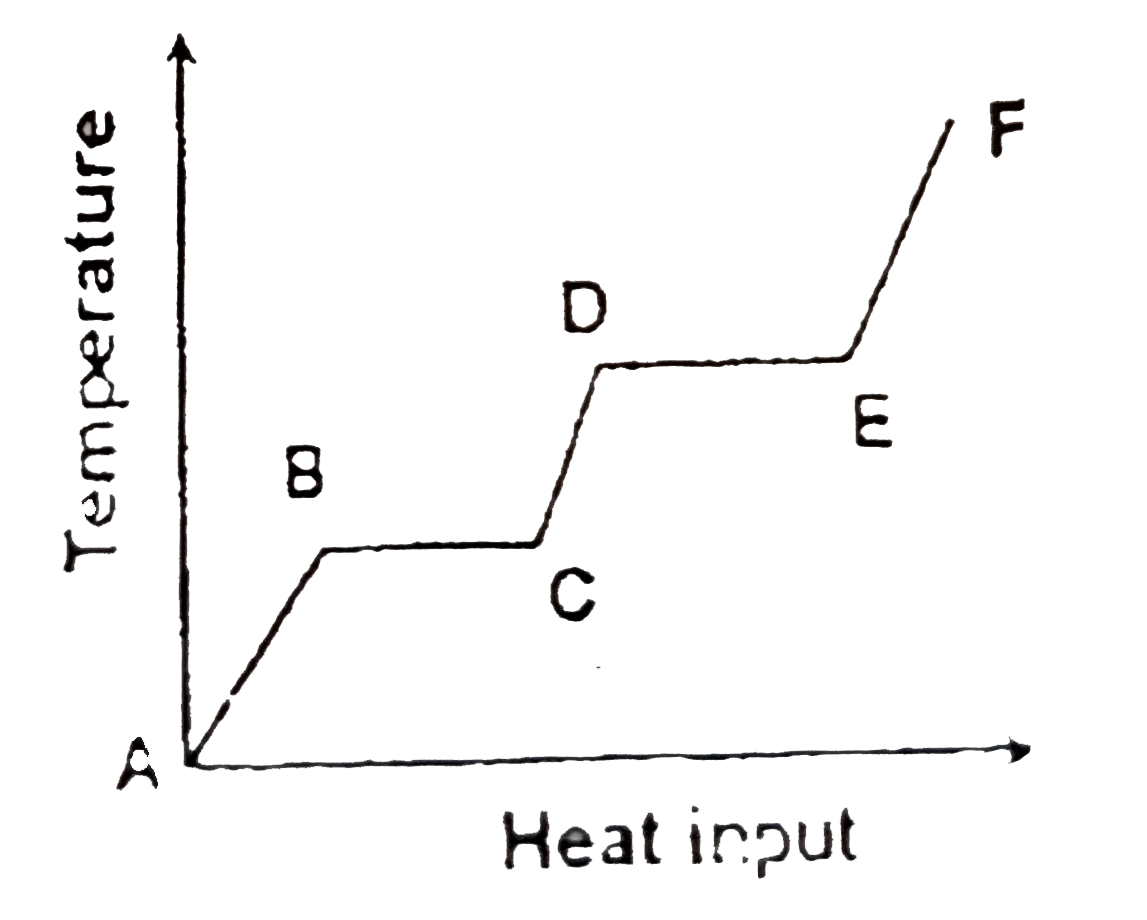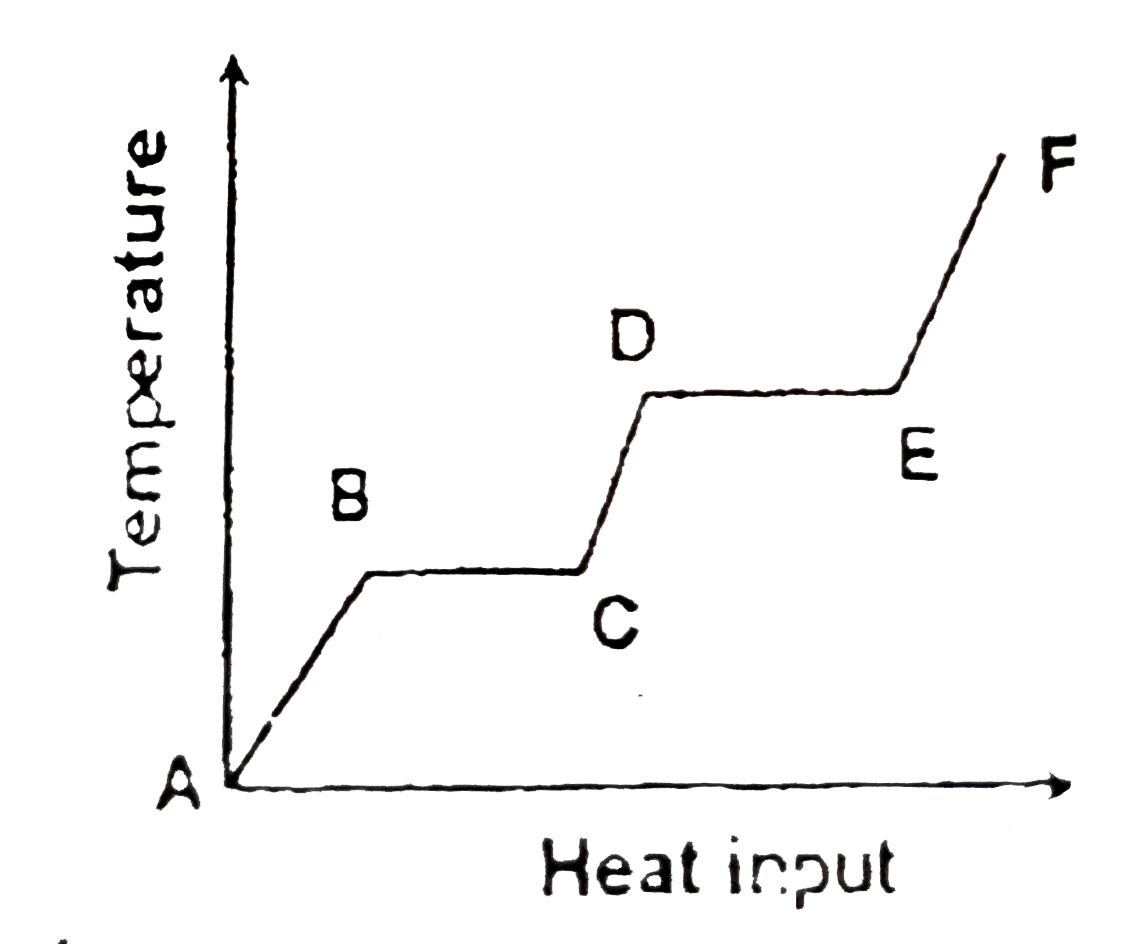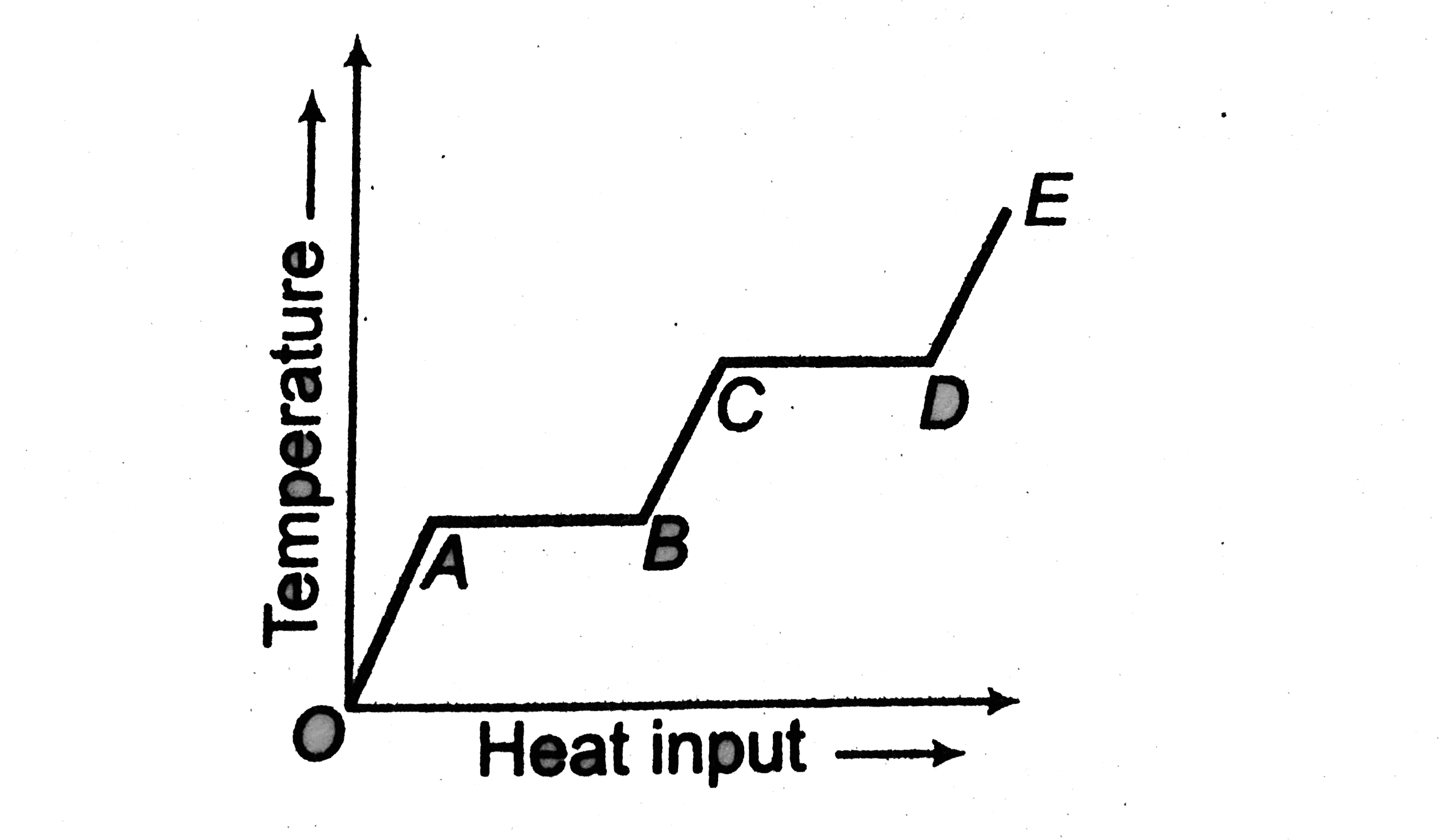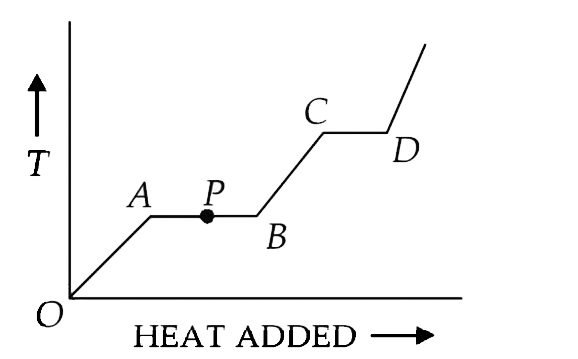When we raise the temperature of a body, the molecules and atoms move with greater kinetic enery. Assume that "the temperature" is the manifestation of only the kinetic energy is atomic and subatomic levels and no mass change (excess//defect) occurs due to heating. Now a solid material is supplied with heat at a constant rate. The temperature of the material is changing with the heat input as shown in the graph. BC and DE are parallel to the Heat-input axis
In BC and DE

kinetic energy increases
potential energy increases
kinetic energy decreases
potential energy remains constant
In BC and DE temperature remains constant
⇒K.E. remains constant
⇒ Heat goes to increasing the P.E.
Similar Questions
When we raise the temperature of a body, the molecules and atoms move with greater kinetic enery. Assume that "the temperature" is the manifestation of only the kinetic energy is atomic and subatomic levels and no mass change (excess//defect) occurs due to heating. Now a solid material is supplied with heat at a constant rate. The temperature of the material is changing with the heat input as shown in the graph. BC and DE are parallel to the Heat-input axis
In AB, CD and EF, the energy of the system increases. Here "energy" refers to
 View Solution
View SolutionWhen we raise the temperature of a body, the molecules and atoms move with greater kinetic enery. Assume that "the temperature" is the manifestation of only the kinetic energy is atomic and subatomic levels and no mass change (excess//defect) occurs due to heating. Now a solid material is supplied with heat at a constant rate. The temperature of the material is changing with the heat input as shown in the graph. BC and DE are parallel to the Heat-input axis
In which of the following phase the assumption made in the above comprehension is most precise ?
 View Solution
View SolutionA solid material is supplied heat at a constant rate. The temperature of material is changing with heat input as shown in the figure. What does the slope of DE represent ?
 View Solution
View SolutionCan we define specific heat capacity at constant temperature?
View SolutionWhen a ferromagnetic material is heated above its Curie temperature , the material
View SolutionThe heat required to raise the temperature of a body by 1∘C is called
View SolutionIf heat a supplied to a solid, its temperature
View SolutionDuring heat exchange, temperature of a solid mass does not change. In this process, heat
View SolutionThe variation of temperature of a material as heat is given to it at a constant rate is shown in the figure. The material is in solid state at the point O. The state of the material at the point P is…..
 View Solution
View SolutionThe variation of temperature of a material as heat is given to it at a constant rate is shown in the figure. The material is in solid state at the point O. The state of the material at the point P is…..
 View Solution
View Solution

